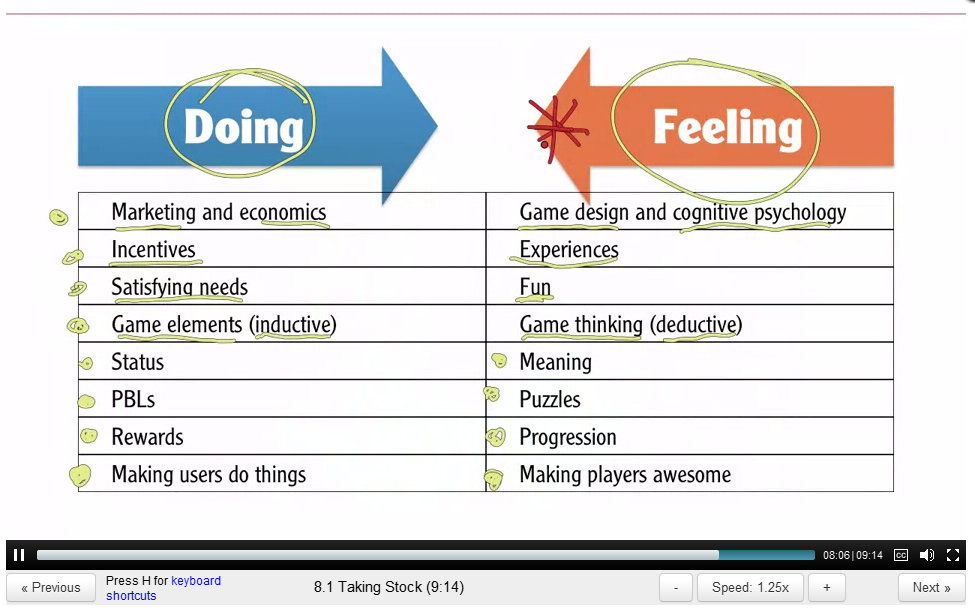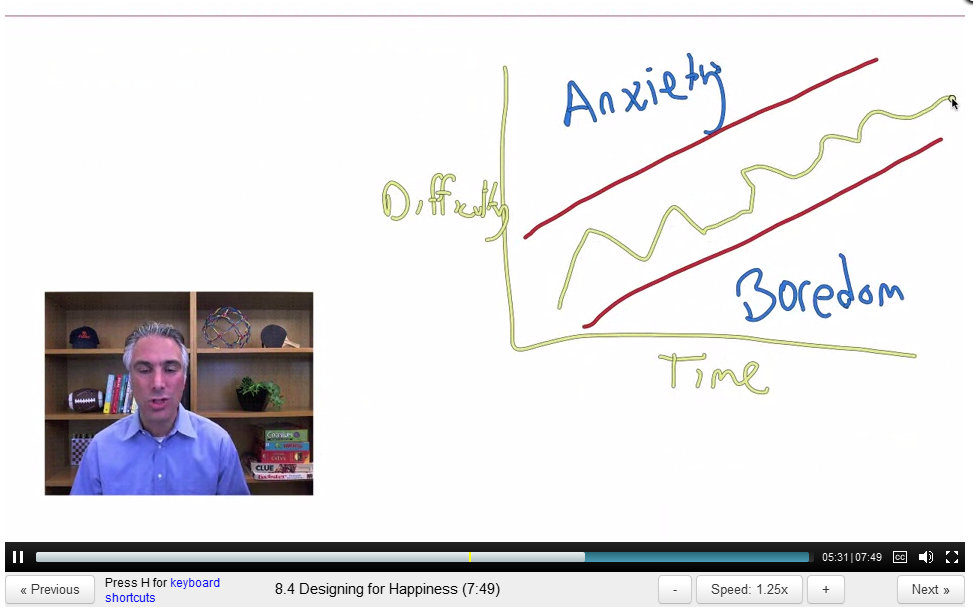PHILADELPHIA, 23 September –- Gamification Design Choices with Kevin Werbach of the University of Pennsylvania’s Wharton Business School, Week 4!
Saying that gamification is a form of design means that it should involve a creative, human-centered, thoughtful process to achieve the best results. This unit identifies important considerations and options.
• Gamification / Coursera
• Student Pix on Course Wiki
CLASS NOTES – PART 8 – GAMIFICATION DESIGN CHOICES
8.1 Taking Stock: Two approaches to Gamification Design
Is a Slot Machine a game?
– random number generator… not really a game, is it?
– yet many online games use pretty similar elements and people find them powerfully engaging.
Slot Machine > “Game of Chance”
Doing vs Feeling
you’ll draw on different resources depending on which camp you’re in
8.2 Is Gamification right for me?
4 Questions:
1. Motivation – do you derrive value from encouraging behavior?
2. Meaningful Choices – interesting activities?
3. Structure – can desired behaviors be modeled thru algorithms? (typically a digital system)
4. Potential Conflicts – other motivational structures in org
MOTIVATION
• Emotional connections, unique skills, creativity, teamwork
• OR, to make boring tasks interesting
Neal Stephenson > REAMDE
1 character is a Blizzard Ent-like CEO, using gamification for dull tasks, eg, airport security – boring job as big XP game
MEANINGFUL CHOICES
Google News Badges… eh…
STRUCTURE
• Must be able to encode in rules/algorithms
• Eg: points for Twitter sharing vs Product Registration (Samsung Nation)
CONFLICTS
• other motivational structures: Salary, Job Security
design consciously around traditional structures
8.3 Designing for collective good
Stack Overflow – hugely motivating
> Think about problem in right way: What is programming?
Hard and boring?
Magical and gamelike?
> authentic, rather than coercive, approach
Stack Overflow badges WAY different than FourSquare badges, but still appropriate display of status for the context.
Game elements can help a collaborative, online social group combat the natural tendency for groups to pull apart with self-interest. > deep, significant, enduring results
8.4 Designing for happiness
“Positive Psychology”
psychology is often about pathological conditions
Martin Seligman – why don’t we do the opposite, look at what produces positive, successful lives
FLOW > state of flow, in the zone – music, rock climbing, financial analyst…
Flow happens organically when an activity has certain cracteristics
Game Designers think a lot about tuning the system to keep players in flow / zone
8.5 Amy Jo Kim interview
Author, Game Designer, Shufflebrain
the term “Gamification” will go away, like “AI” went away. We don’t call Amazon an AI system.
Richard Bartle’s player types make her laugh! 😛
Those were player types he saw in text-based MUDs, another system is Meyers-Briggs
They do apply to some MMO Games, not really for gamification projects
she finds — Compete / Collaborate / Explore / Express — far more useful
Take all these charts as starting points and don’t be afraid to tweak them!
Amy Jo Kim talk @Ignite @Google I/O – her (5 minute) talk is at 43:15
Smart Gamification: Seven Core Concepts for Creating Compelling Experiences | Amy Jo KIM:
























